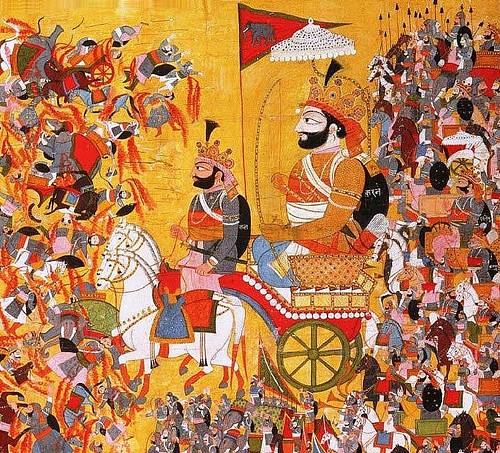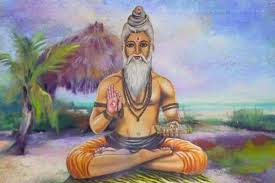The (Kairaus) Kauravas who had brothers like Durjodhana and uttered “everything is ours”; their canopy was spread over twelve yojanas (over 48 miles) but (in the battlefield) their bodies were eaten by vultures. (Dhanasari Namdev, pp. 692-93) The Kairaus or Kauravas were the sons of the king Dhritarashtra and his wife Gandhari. They are said to be one hundred in number. Duryodhana was the eldest, then there was Duhsasana. They became jealous of their cousins known as Pandava and wanted to exterminate s them.
The story of the great war of Mahabharata is based ‘ upon their rivalry. Both Kauravas and Pandavas are the descendants of Kuru, but this patronymic is especially applied to the sons of Dhritarashtra.
References :
1. Kohli, Surindar Singh (ed), Dictionary of Mythological References in Guru Granth Sahib, 1993
The Kauravas are a central group of characters in the Indian epic, the Mahabharata. They are the 100 sons of King Dhritarashtra and Queen Gandhari, with Duryodhana being the eldest and most prominent among them. The Kauravas are known for their rivalry with their cousins, the Pandavas, which ultimately leads to the great Kurukshetra War—a climactic battle that forms the heart of the Mahabharata.
Key Aspects of the Kauravas:
- Birth and Origin:
- Gandhari, after receiving a boon from Sage Vyasa, gave birth to a hard lump of flesh. Vyasa divided it into 101 pieces, which were placed in jars of ghee. These pieces eventually developed into 100 sons and one daughter, Dushala.
- Rivalry with the Pandavas:
- The Kauravas were jealous of the Pandavas’ virtues, strength, and popularity. This animosity led to numerous conflicts, including the infamous dice game where the Pandavas lost their kingdom and were exiled.
- Role in the Kurukshetra War:
- The Kauravas, led by Duryodhana, fought against the Pandavas in the Kurukshetra War. Despite their vast army and powerful allies, they were defeated due to the Pandavas’ righteousness and divine support.
- Symbolism:
- The Kauravas often symbolize greed, arrogance, and the destructive consequences of unchecked ambition. Their story serves as a moral lesson on the importance of dharma (righteousness) and the perils of adharma (unrighteousness).
The Kauravas’ tale is a rich tapestry of human emotions, moral dilemmas, and divine interventions.




